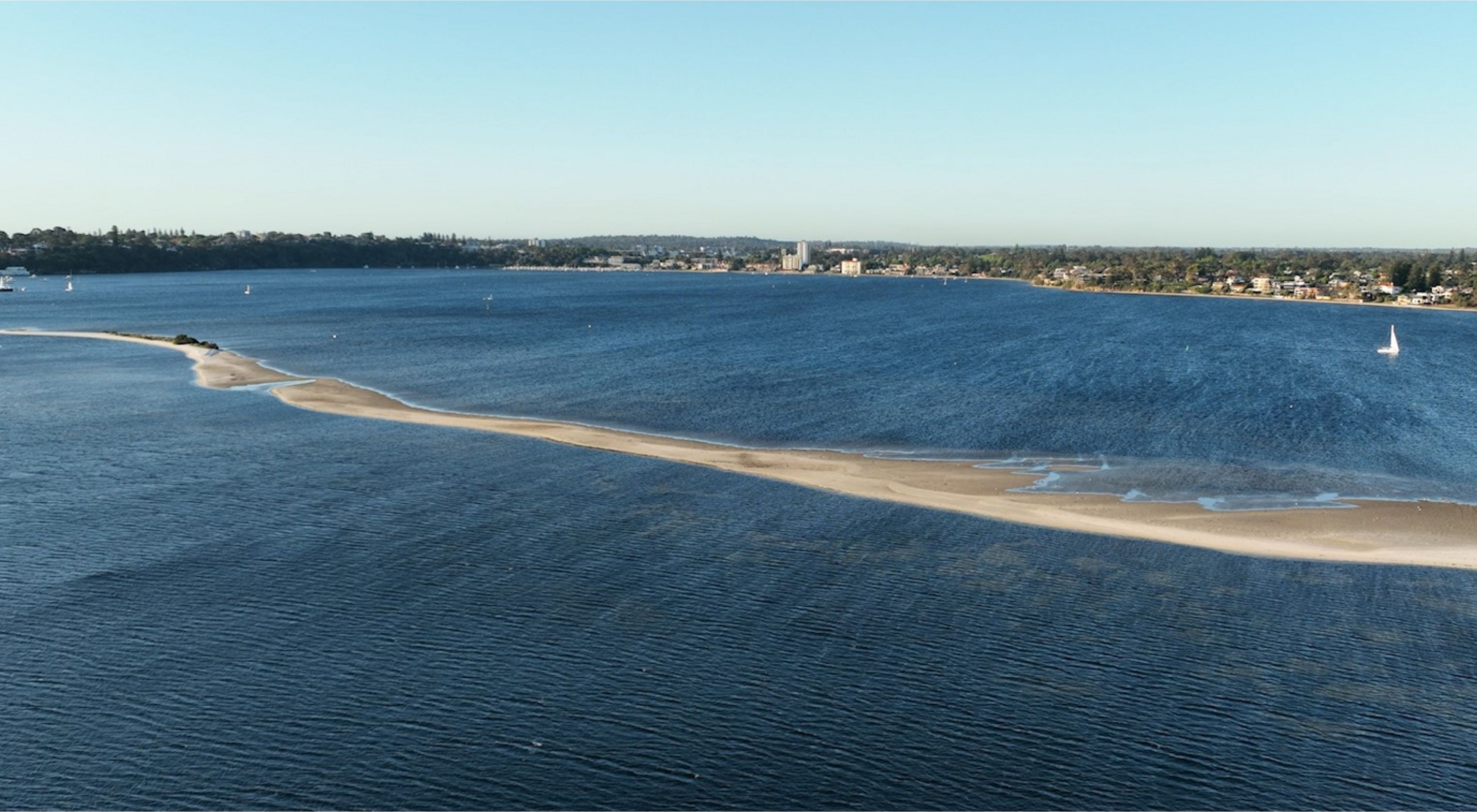Media Contacts
-
Vanessa Billy
Communications Manager
The Nature Conservancy Australia
Phone: 0478 638 180
Email: vanessa.billy@tnc.org
Four new native shellfish reefs are boosting the health and biodiversity of Perth’s iconic Swan-Canning Estuary.
The final stage of the reef restoration project led by The Nature Conservancy Australia (TNC) was completed recently, when 160 tonnes of adult blue mussels were seeded onto the new reef bases.
“We are incredibly excited to announce the completion of reef construction and seeding,” Andrew Bossie, TNC’s Oceans Project Coordinator for the Swan-Canning Estuary, said.
“This is the culmination of a huge effort between the project partners and the local community to enhance function and biodiversity in this estuary system beloved by all. It’s early days but the reefs are already showing very promising signs. Divers are reporting good survival of seeded mussels, and importantly some of the reefs have natural settlement of juvenile mussels. We expect that over time, the reefs will continue to develop and provide rich habitat for a range of marine and estuarine species,” he said.
“We’ve already seen lots of juvenile reef fish starting to take up residence on the reefs. We are looking forward to doing formal surveys of all fish and invertebrate life on the reefs in late April,” he said.
Delivering this project has been the result of a tremendous collaboration across government, industry, academia, Derbarl Yerrigan Knowledge Holders and the broader community, with generous funding support provided by Lotterywest, the Minderoo Foundation, Western Australia’s Department of Biodiversity, Conservation and Attractions (DBCA), the Australian Government’s Reef Builder initiative, as well as Jock Clough, Adrian & Michela Fini, Austral Fisheries, Gavin Bunning, The McCusker Foundation, Major Holdings Pty Ltd, the Ungar Family and Michael & Margrete Chaney.
DBCA Rivers and Estuaries Principal Scientist, Dr Kerry Trayler said there has been a lot of planning, research and effort invested in bringing the reefs to fruition.
“The mussel seeding is a critical step that brings functionality and effectiveness to the reefs. Mussels filter water naturally and on a large scale can add a massive in-water boost to existing investment in land-based water quality improvement approaches across the Swan-Canning catchment. The reefs will be monitored over the next three years to measure their effectiveness and maximize learnings from this adaptive management approach and inform its applicability to other systems in the State,” Dr Trayler said.
The Swan-Canning Estuary site is one of 13 locations identified for restoration under the Reef Builder program, a partnership between the Australian Government and TNC to establish and restore shellfish reefs and support local communities with the creation of jobs.
“Australian communities are at the centre of efforts to protect and preserve our most precious natural environments. This project has introduced the equivalent to one and a half blue whales worth of adult blue mussels to build new shellfish reefs in the Swan-Canning Estuary.”
“These shellfish reefs will not only provide positive outcomes for marine species but will also create greater opportunities for recreational fishing and tourism in the heart of Perth,” Minister for the Environment and Water, Tanya Plibersek, said.
Reef construction started in July 2022, when limestone reef bases to support the mussels were built across four sites including two at Freshwater Bay, one at Point Walter and one at Attadale. The reef arrays are built within an 8 hectare restoration area spanning the four sites, making this the largest shellfish reef project TNC has completed in WA and one of the largest in Australia.
Lotterywest and Healthway CEO Ralph Addis said Lotterywest is pleased to see the project reach such an important milestone.
“We look forward to seeing the reefs contribute to the many benefits the Swan community enjoys from the river,” he said.
“The Swan-Canning Estuary is highly valued by the Whadjuk people and the broader Western Australian public. This project has helped improve the health of the estuary by restoring reefs that were damaged during our early European history. The reefs will provide habitat for mussels and other marine life critical for keeping the water clean and the river thriving,” said Dr Tony Worby, Director of Flourishing Ocean Initiative at Minderoo Foundation.
If you would like to know more about our reef restoration work in the Swan-Canning, please visit: Restoring shellfish ecosystems in the Swan-Canning Estuary (natureaustralia.org.au
Photos of the Swan reef restoration project are available here: https://tnc.box.com/s/482tbna3scrbo8b3vaw64jvazf137pk6
The Nature Conservancy is a global conservation organisation dedicated to conserving the lands and waters on which all life depends. Guided by science, we focus on getting things done efficiently and with the greatest positive impact for conservation. We’re a trusted organisation working in more than 70 countries and territories around the world on innovative solutions to our world’s toughest challenges so that nature and people can thrive together. To learn more about The Nature Conservancy in Australia, follow us on Facebook.
